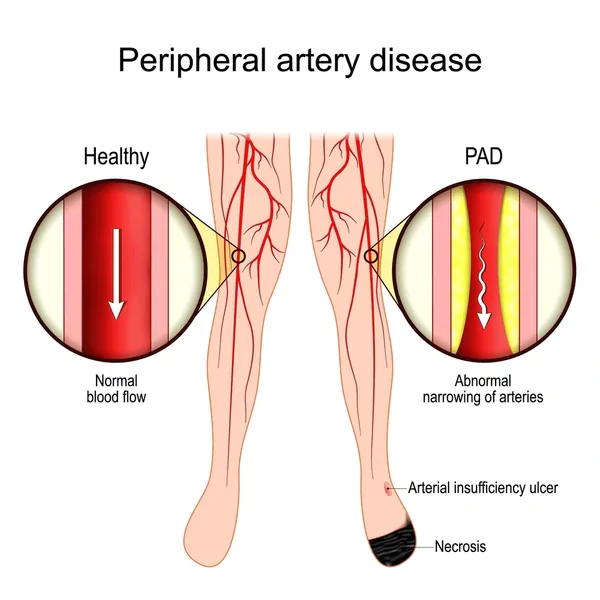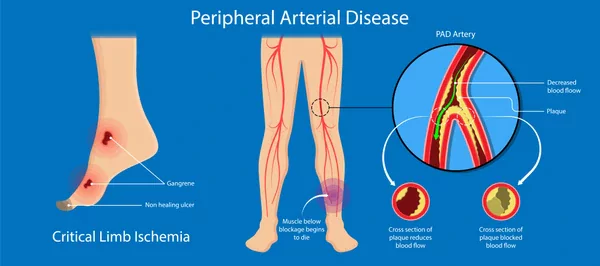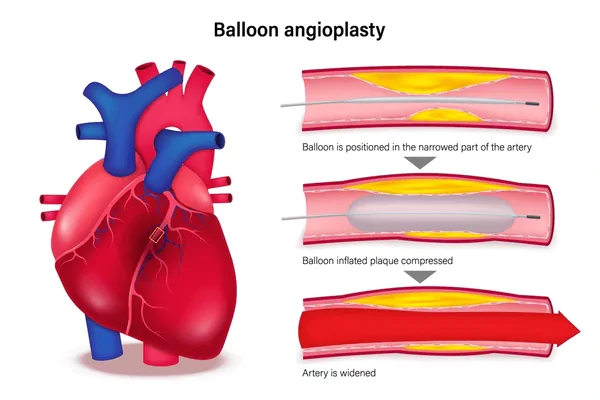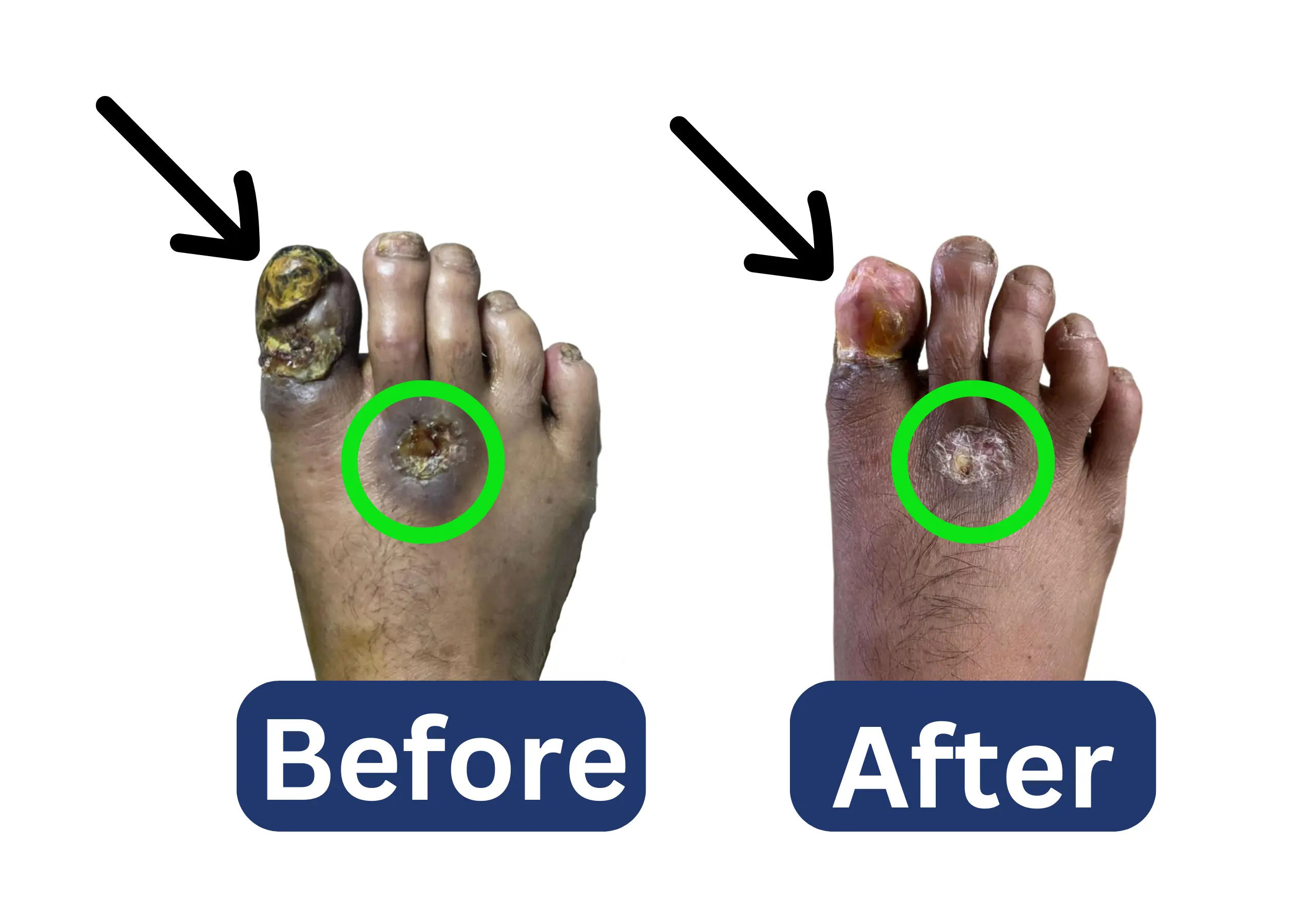By Dr. Amit Sahu, Senior Interventional Radiologist and Specialist in Peripheral Arterial Disease (PAD) Treatment in Mumbai
Peripheral Arterial Disease (PAD) is a common yet often overlooked condition that affects millions of people worldwide.
It occurs when narrowed arteries reduce blood flow to the limbs, primarily the legs, leading to symptoms like pain, cramping, and even non-healing wounds.
Early diagnosis and treatment are crucial to prevent severe complications such as limb loss or heart attacks.
As an senior Interventional Radiologist in Mumbai, Dr. Amit Sahu, specializes in providing one of the Best Peripheral Arterial Disease Treatment in Mumbai.
In this blog, we’ll explore the role of medications in managing PAD, along with essential information about the disease, its symptoms, causes, and prevention tips.

What is Peripheral Artery Disease?
Peripheral Artery Disease (PAD) or Peripheral Vascular Disease (PVD) is a circulatory disorder caused by the buildup of plaque in the arteries, a condition known as atherosclerosis.
This plaque narrows the arteries, restricting blood flow to the limbs, especially the legs. Over time, reduced blood flow can lead to pain, tissue damage, and in severe cases may lead to amputation.
PAD is not just a standalone condition; it is often linked to other cardiovascular diseases, such as coronary artery disease and stroke.
Understanding PAD is the first step toward effective management and treatment.
How Common is Peripheral Artery Disease?
Peripheral Artery Disease (PAD) is more common than you might think. Globally, it affects over 200 million people, and its prevalence is rising in India due to lifestyle changes and increasing rates of diabetes and hypertension.
Nearly every 20 seconds, in India, there a major or minor amputation happening due to diabetic foot, with PAD being one of its components.
Despite its prevalence, PAD is often underdiagnosed because many people mistake its symptoms for normal signs of aging or fatigue.
Raising awareness about PAD and its symptoms is essential to ensure early diagnosis and treatment.
Regular screenings are particularly important for individuals with risk factors like smoking, diabetes, or a family history of cardiovascular diseases.

Stages & Symptoms of Peripheral Artery Disease
PAD progresses through several stages, each with distinct symptoms and implications for treatment:
- Asymptomatic Stage:
- No noticeable symptoms.
- Plaque buildup is present but not severe enough to cause discomfort.
- Claudication Stage:
- Pain, cramping, or fatigue in the legs during physical activity.
- Symptoms typically subside with rest.
- Critical Limb Ischemia:
- Severe pain even at rest.
- Non-healing wounds or ulcers.
- Risk of gangrene and limb loss.
Identifying the stage of PAD is critical for determining the most effective treatment plan.
Risk Factors for Peripheral Artery Disease
Several factors increase the risk of developing PAD:
Modifiable Risk Factors:
- Smoking: The most significant risk factor.
- Diabetes: High blood sugar damages blood vessels.
- High Blood Pressure: Increases strain on arteries.
- High Cholesterol: Contributes to plaque buildup.
- Obesity: Puts additional pressure on the circulatory system.
Non-Modifiable Risk Factors:
- Age: Risk increases after 50.
- Family History: Genetic predisposition to cardiovascular diseases.
Addressing modifiable risk factors through lifestyle changes can significantly reduce the risk of PAD.
Prevention Tips for Peripheral Artery Disease
Preventing PAD involves adopting a heart-healthy lifestyle:
- Quit Smoking: Smoking is the most significant risk factor for PAD.
- Maintain a Healthy Diet: Focus on fruits, vegetables, whole grains, and lean proteins.
- Exercise Regularly: Physical activity improves circulation and overall cardiovascular health.
- Manage Chronic Conditions: Control diabetes, blood pressure, and cholesterol levels.
- Regular Health Check-ups: Early detection can prevent complications.
Peripheral Arterial Disease (PAD) Treatment in Mumbai
Mumbai is home to some of the most advanced medical facilities for Peripheral Arterial Disease Treatment.
As a specialist in interventional radiology, Dr. Amit Sahu, offer personalized treatment plans tailored to each patient’s unique needs.
The Role of Medications in PAD Treatment
Medications play a crucial role in managing PAD. They aim to:
- Improve blood flow.
- Reduce symptoms like claudication.
- Prevent disease progression and complications.
Commonly Prescribed Medications
- Anti-platelet Agents:
- Examples: Aspirin, Clopidogrel.
- Function: Prevent blood clots.
- Cholesterol-lowering Drugs:
- Examples: Statins (Atorvastatin).
- Function: Reduce plaque buildup in arteries.
- Blood Pressure Medications:
- Examples: ACE inhibitors, Beta-blockers.
- Function: Control hypertension and reduce strain on arteries.
- Diabetes Management Drugs:
- Examples: Insulin, Metformin.
- Function: Maintain stable blood sugar levels.
- Symptom-relief Medications:
- Examples: Cilostazol, Pentoxifylline.
- Function: Improve walking distance and reduce pain.
Importance of Medication Adherence
Consistent use of prescribed medications is vital for managing PAD effectively. Patients should be aware of potential side effects and consult their doctor if they experience any issues.
Advanced Treatments for PAD in Mumbai
When medications alone are not sufficient, advanced treatments may be required:
- Interventional Radiology procedures: Minimally invasive procedures to open blocked arteries & improve blood flow into leg. Various Interventional Procedures maybe performed depending on clinical, morphological, anatomical involvement. These include:

-
- Angioplasty: Using balloon catheters to open narrowed arteries.
- Stenting: Using metallic stent to keep arteries open.
- Atherectomy: Helps open artery by shaving off the plaques.
- Intravascular Lithotripsy: Helps breaking tough calcified plaques to help open the artery.
- Drug eluting balloon & Stents: The balloons and stents maybe medicated to deliver drug. These drugs reduce chances of re-stenosis and help keep arteries open longer.
- Bypass Surgery: Restoring blood flow through grafted vessels.
As an experienced Interventional Radiologist, Dr. Sahu specializes in advanced interventional techniques to provide the Best Peripheral Arterial Disease Treatment in Mumbai.
Depending on individual factors, he may recommend best interventional treatment suited for you. He also closely works with leading surgeons, to optimize wound healing.
Why Choose Dr. Amit Sahu for PAD Treatment in Mumbai?
With years of experience and a patient-centered approach, Dr. Amit Sahu is committed to delivering the highest standard of care for PAD patients.
His expertise in advanced, complex Interventional Radiology procedures for PAD ensures that patients receive the most effective and least invasive treatments available.
Conclusion
Peripheral Arterial Disease is a serious condition that requires timely diagnosis and treatment. Medications play a vital role in managing PAD, but advanced treatments may be necessary in severe cases.
If you or a loved one is experiencing symptoms of PAD, don’t hesitate to seek expert care.
For the Best Peripheral Arterial Disease Treatment in Mumbai, schedule a consultation with Dr. Amit Sahu. Together, we can work toward improving your vascular health and quality of life.
Quick Contact:
OPD : Chembur | Parel | Navi Mumbai | Andheri
Phone: – 8779987583
Email: – dramitsahu.co.in@gmail.com
Checkout Our Cases Pictures
